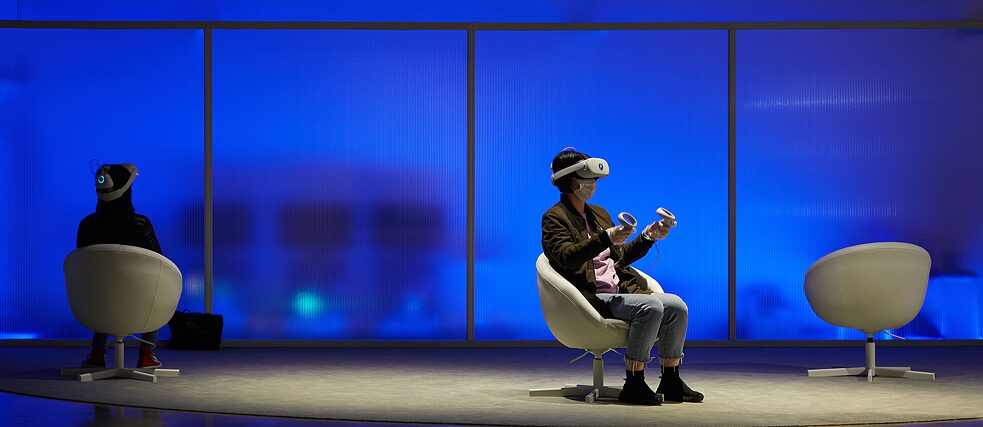Museum Work in Seoul
“I am anxious that national borders could remain closed.”

How do museums remain a place of encounter and exchange - even in a digital, post-pandemic world? An interview with Leeji Hong, curator of the National Museum of Contemporary Art Seoul (MMCA).
By Kyungeun Lim and Eva Fritsch
From 14th to 30th September 2021, the National Museum of Modern and Contemporary Art hosted an independent symposium on “Museums in a Post-Pandemic World” with speakers from Europe and Asia. What did you learn from the discussions?
Leeji Hong: Throughout the last two years of the pandemic, people have gotten used to interact with each other through screens. First, everyone was fixated on how we could overcome such changes, which was a very confusing time for everyone. But this year, people are trying to adapt and think about how to coexist with the coronavirus. In regards to this, many speakers talked about new changes at the symposium.
Even though during the symposium, which took place in the MMCA, so in an art museum, I could feel the longing to enjoy culture again without a reservation system and to return to old structures, but we also have to live with the fear that we could lose things that we took for granted.
What changes exactly can we expect regarding art museums in times of the pandemic?
Leeji Hong: I think it implies changes of different aspects. As it was initially difficult for museum staff to imagine that public institutions would not reopen, it took some time for them to accept that online interaction is a possibility in the arts sector. Being in the situation of not being able to receive guests, we were faced with many problems, not only concerning staff, but the museum as a public body and institution - experiences that will also shape our actions in the future.
We should not forget that an art museum is not run to preserve objects as a "tomb for collected things”, but we have to consider how it can be closer to local society and people as an even more diverse space.
The National Museum for Modern and Contemporary Art also opened exhibitions online. Were these as successful as you have anticipated?
Leeji Hong: By being able to host several events digitally, we could see how much is possible through such encounters. As a result, many digital exhibitions were done actively, like metaverse, a collective virtual space, where we showed our permanent exhibitions, online lessons, talks, webinars. People could see them in an uncomplicated fashion through various forms of expandable digital platforms, without having to change location.
The influx of young people increased drastically. But despite speed and comfort, there are disadvantages. Digital copy right issues or internet literacy are examples for that. The issue of electronic democracy was also raised, which means that people, who don’t have the equipment, cannot participate, even though the goal was to enable anyone who is interested to take part.
But the biggest lesson is the development of the technical dimension. So far, we have tried to transform offline activities into online activities and now it is possible to execute the roles of online and offline activities independently from each other.
It is difficult to completely replace offline visits with online visits and vice versa.
Leeji Hong
Leeji Hong: Now I think that visitors don’t come to an art museum just to admire exhibition pieces, but I rather think that they come to experience the atmosphere of the art museum. The viewing of artwork is clearly possible online as well as offline. But the act of preparing oneself to view art and the lingering of having seen and enjoyed art - and thus the museum visit as an event -, are all essential parts of offline visits. Therefore, I think that it is difficult to completely replace offline visits with online visits and vice versa.
Have you as a curator, directly or indirectly witnessed what effects the pandemic had on the living conditions of artists?
Leeji Hong: Ironically, many painters have produced many more paintings than in the previous year, and the world in which they work has also expanded. By now, other forms of art that require collaboration, like film and theatre productions, have also gone through great difficulties due to the spatial restrictions. But at the same time more and more actors in the field thought about innovative exhibition formats and its surroundings. It is the same in the artistic community. As much as budgets got cut, more thought was put into the necessity of certain exhibitions and the priorities about planned exhibitions were redefined according to ecological and ethical aspects.
“It is important to not be buried in the digital world.”
Leeji Hong
Leeji Hong: As a museum curator, I am anxious that because of corona, national borders could remain closed, and interaction could become localised. And I am concerned about the lack of empathy among people. Also public museums are trying very hard to process global problems through projects that tell stories about discrimination and hatred, environmental and climate crisis, participating in society. That raises questions, like whether such can be actively done online and how international interaction can be maintained also digitally.
I think that we cannot put technology and digitalisation above art. Although during the pandemic the first priority is to contain the infection and technological achievements are a great help in this, they should still not take precedence over everything. Efforts to consciously deal with digitalisation depend on everyone. That is why it is important to not lose our sense of community and to not be buried in the digital world.